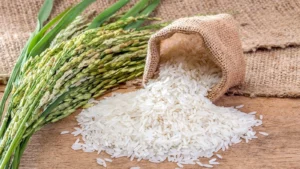In January, rice markets saw a downturn, particularly in Rio Grande do Sul, Brazil’s main reference for rice.
Analyst Evandro Oliveira points out several reasons for the price drop: the upcoming harvest, a rise in imports, and resistance from the industry to increase prices due to retail pressures.
These factors combined to keep prices on a downward trend.
The reluctance to adjust prices reflects broader sales challenges in wholesale and retail, which have been decreasing in recent months.
Producers are clearing out remaining stocks to make room for the new crop, further affecting prices.
At the month’s end, a 50-kilo bag of rice priced at R$123.52 in Rio Grande do Sul marked a 3.58% decrease from the previous week.

This price movement indicates a slight decrease compared to December but shows a significant increase from the same time in 2023Global Perspective: China’s Rice Production
Globally, China’s rice production is expected to slightly decrease in the 2023–2024 marketing year.
The USDA attaché reports a projected decrease in harvested area and a small adjustment in exports and domestic consumption.
This scenario impacts international markets, with China’s exports and imports adjusting accordingly.
The global rice market’s dynamics, including Brazil’s price adjustments and China’s production shifts, highlight the interconnectedness of global agriculture.
Changes in one part of the world can influence market conditions elsewhere, underscoring the importance of monitoring these trends for stakeholders in the rice industry.

